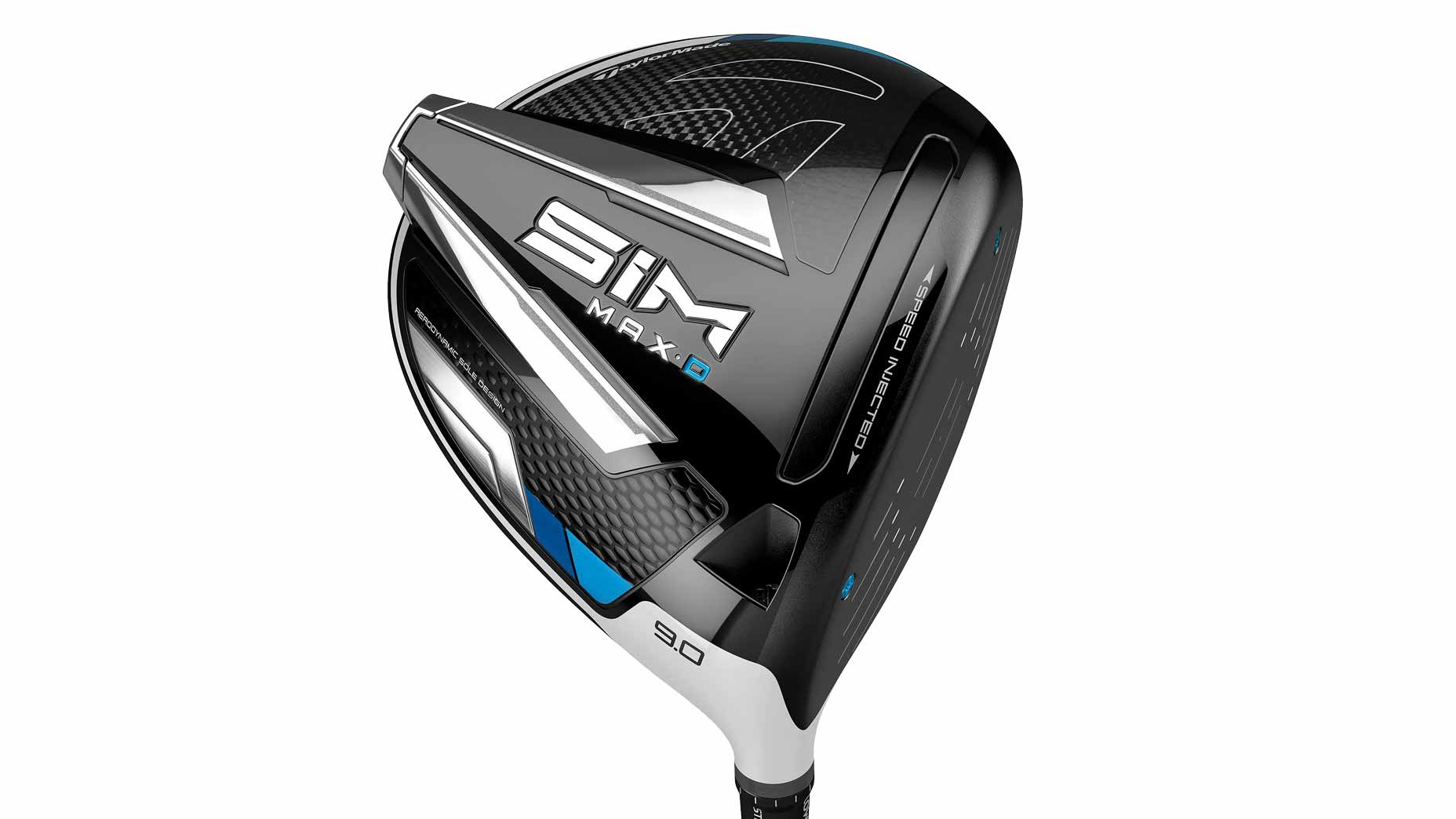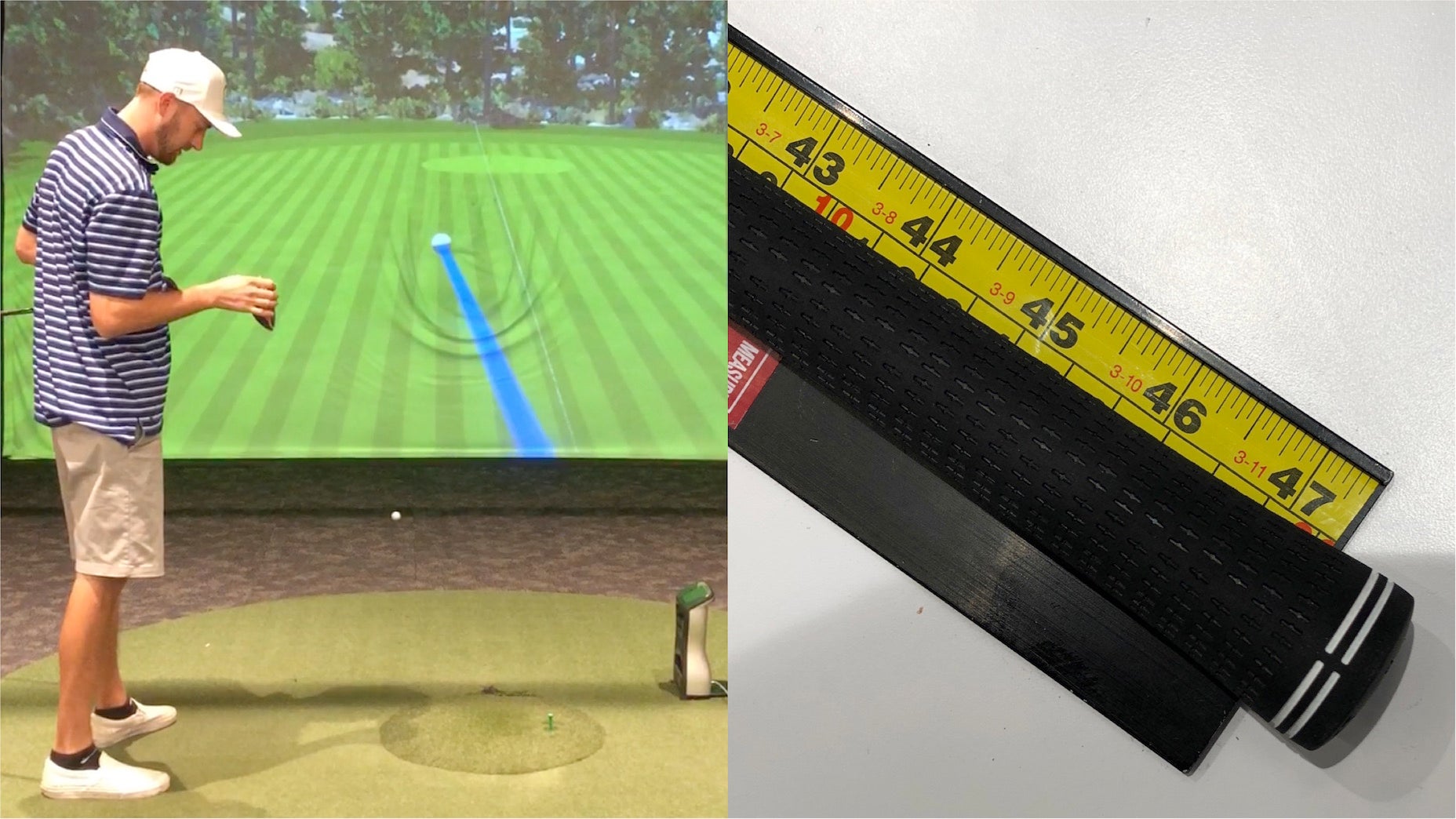Following his 2020 U.S. Open victory, Bryson DeChambeau announced that he would be testing 48-inch driver shafts in his radical quest for more distance. Since most driver builds on Tour, and in the industry at large, measure somewhere between 45 and 45.75 inches, DeChambeau’s proclamation came as quite a shock for some.
Typically, if you want to see 48-inch driver lengths, you’d have to go onto the long drive tours. Times are changing, though, as more and more PGA Tour golfers take on the “bomb and gouge” mindset, which prioritizes distance ahead of accuracy.
With DeChambeau leading the distance race, other golfers have followed suit. Phil Mickelson, for example, has been using a 47.5-inch driver, and rising star Viktor Hovland has tried both 47 and 48-inch drivers ahead of the Masters. According to Tour reps from various companies, a number of other golfers have experimented with longer builds, too.
DeChambeau, in all likelihood, will not use a 48-inch driver shaft at the 2020 Masters, but we still wanted to test out the merits of a driver shaft that long. So, our equipment editors Jonathan Wall and Andrew Tursky chased down 48-inch versions of their gamer shafts, took some swings, and measured the results on Foresight Sports launch monitors.
Would they gain ball speed? Would they lose accuracy? Would they even be able to make solid contact? Wall and Tursky provide first-hand accounts regarding their 48-inch shaft testing below.
Andrew Tursky, senior equipment editor (2-handicap)
Gamer driver: Callaway Mavrik Sub Zero (10.5 degrees)
Gamer Shaft: Mitsubishi Diamana DF 60TX
Length: 45.25 inches
Swing weight: D3
Recently, Tim Briand, my Fully Equipped co-host and Senior VP of GOLF.com’s sister company True Spec Golf, fit me into my gamer driver after an in-depth fitting. I’ve been extremely happy with the build and have been driving it better than I have in years. My miss is a hook to the left, but I’ve gotten that relatively under control with a lesson from Martin Chuck and new driver/shaft technology.
During the recent 48-inch driver test, I hit three shots with my gamer driver to get baseline results. As you’ll see in the data presented below, my swing speed was 115 mph, average ball speed was 166.4 mph, launch was 12.6 degrees, I was seeing 2030 rpm of spin, averaged 13.7 feet offline, carried it 297 yards and totaled 322 yards on average. I must say, I’m satisfied with both distance and dispersion from the gamer, and these numbers do accurately represent the performance I have being seeing of late.

Callaway Mavrik Sub Zero driver
I know, gamer drivers are boring. Let’s move onto the good stuff.
As I’ve been told by numerous Tour reps, most of the guys on the PGA Tour who are testing 48-inch drivers are simply using longer versions of their gamer shafts. So that’s what I did. With the help of True Spec Golf’s Alex Li, I built up my driver head with an uncut version of my gamer shaft. Here are the specs:
Driver: Callaway Mavrik Sub Zero (10.5 degrees)
Shaft: Mitsubishi Diamana DF 60TX
Length: About 48 inches
Swing weight: E5
In order to stay true to the experiment, we didn’t change anything other than the shaft length (at first). Since we added so much length and didn’t make adjustments to the head weight, the driver ended up having a swing weight of E5 (near the heaviest available on the alphanumeric club weight scale, whoa!). The first time I picked the driver up with the 48-inch build, it was noticeably heavy, the head looked smaller from farther away, and the shaft felt like I was holding a fishing rod instead of a golf club. It was intimidating.
Before my first swing, I was concerned about even making contact. The sheer length of the driver forced my swing path to be much flatter, too, which made me concerned I’d hit the turf before the ball.
My first shot with the 48-inch driver saw a drastic decrease in ball speed (162 mph) because I barely caught it on the face. Hey, it was my first swing with a driver that long! My next two swings with the 48-incher saw a bit of an improvement when it came to speed, but I saw a drop in distance and accuracy overall. The weight and length of the club were overwhelming, and I didn’t really feel comfortable with it.
After three swings, compared to the gamer, I picked up 2.5 mph of swing speed, 2 mph of ball speed, lowered launch by 1.4 degrees, spin increased by 208 rpm, I lost 4 yards of carry and 5 yards of total distance. I was also hitting it nearly 65 feet further offline, too, which is not good.

That’s when we made an adjustment. Li suggested I take the 14-gram back weight out of the head in order to lighten the load. By reducing the head weight, the swing weight dropped all the way down to D5.5. Immediately, it felt significantly more manageable. We referred to this setup as “48-inch dialed in.”
View this post on InstagramA post shared by Fully Equipped | GOLF.com (@fullyequippedgolf) on
Compared to my gamer, I picked up 6 mph of swing speed, 7.1 mph of ball speed, launched 0.9 degrees lower, had 157 rpm less spin, lost 12 mph of ball speed and lost 8 yards of total carry. Remember, these are averages of the three swings. With this lighter setup, I hit my two longest drives of the day (each 331 yards), but my other shot went just 281 yards; I completely missed the face.


Looking at the numbers and going by my own feel, a 48-inch setup just isn’t for me. While I did see some potentially big distance gains, especially with the lighter setup, I just couldn’t consistently hit the center of the face. The good ones were fun, but my misses were far too concerning to take the setup to the golf course, at least without a lot more practice.
After conducting this experiment, and speaking at length with Li, I do suggest that every golfer goes through their own length experiments with their drivers (and other clubs, too). Just because clubs come in a certain stock length does not mean it’s the right length for you. Start at 44 inches and test out drivers in 0.5- or 1-inch increments (up to 48 inches, if possible) until you find the one you’re most comfortable with.
I do realize most golfers don’t have access to numerous high-end golf shafts. I don’t have a perfect solution to that issue, but if you can track down some used longer shafts, and/or know someone who can build clubs cheaply, you can try this experiment for yourself. If not, call up your local club builder or golf professional and see what options are available. Length is an important variable in all golf clubs, so do the best you can in finding the right length for you.
Jonathan Wall, managing equipment editor (6-handicap)
Gamer driver: TaylorMade SIM Max (10.5 degrees)
Gamer Shaft: Graphite Design Tour AD HD 6X
Length: 45 inches
Swing weight: D2
If I’m being honest, I had zero interest in conducting 48-inch driver shaft testing. The big stick is by far the most inconsistent club in my bag — and has been since I first picked up one of my dad’s Wilsons when I was a kid. In my eyes, going longer felt like a death sentence. I might as well bring an extra dozen to account for all the lost balls that would no doubt find the woods.
If there’s one thing I’ve learned over the years with the driver, it’s that I always play well when I’m swinging within myself. Smooth keeps me on the map and plays to my strengths (irons and short game). The second I try to go after one, I usually end up snap-hooking it into the lumber yard. It never ends well.

TaylorMade SIM Max
View Product
Compared to Tursky’s data-driven approach into 45.25 versus 48 at True Spec, I went about this in a manner befitting an average golfer who might reside in an area where a True Spec isn’t within driving distance.
My test was far more primitive. I settled in at the local range with my Foresight Sports QCQuad launch monitor and hit three new Titleist Pro V1x golf balls with both builds (into a prominent headwind) to see if anything stood out.
With my usual on-course swing, I smoothed three drives to the back of the range without much effort. I’ve grown accustomed to the new Graphite Design Tour AD HD shaft in my driver and like the solid feel it produces when I catch one. The ball speed on the shots ranged from 159-161 mph — I’m nowhere close to Tursky territory — with a spin rate that fluctuated between 1926 and 2100 rpm. Carry came in at around 280 yards. All normal numbers when I’m swinging my best.

And then came the 48-inch shaft. It should be noted that Graphite Design didn’t even have a 48-inch shaft for me to test at first. I had to get a 3/4-inch butt extension added to the end of the shaft to pull it off.
After detaching my gamer head and placing it on a 48-inch Graphite Design Tour AD HD shaft, I immediately noticed a significant increase in overall weight. To put it kindly, it felt like I was swinging a sledgehammer. Even more disorienting was the additional 3 inches of length, which somehow made the head look as if it was a mile away from me.
Everything felt off.
The new driver build no doubt took some getting used to. My first ball was a knee-high screaming liner, followed by a banana slice that peeled off in a hurry. My nightmare was coming true. I couldn’t get the timing down, which made the test even more frustrating.
After a few more balls, I finally started to find the center (or what felt like the center) of the face. My spin rate was all over the place, as was my launch angle and pretty much every other measurable. But I was making consistent-ish contact.
From there, I picked up three fresh balls and conducted testing. The first two were slightly towards the toe but still produced a towering launch angle that was closer to 13 degrees. My ball speed was up slightly (about 2 mph), but the numbers weren’t all that impressive.
And then came the final ball, a perfectly struck tee shot that caught the middle and exploded off the face. I knew I caught it. The end result was an additional 6 mph ball speed and nearly 15 yards of carry. Not bad for someone who hasn’t touched 300 yards of carry in 5+ years.

And just like that, I was hooked. I spent the next 30 minutes hitting more balls with my new driver build in an attempt to best my last ball from testing. I got close on numerous occasions, but each pounded tee shot was followed by a penalizing slice or another screaming liner. The lack of consistency was a glaring issue.
For someone who doesn’t need an additional issue to deal with off the tee, it was reason enough to end on a high note and go back to my gamer build, which somehow felt like a toothpick in my hands after staring at a shaft that resembled a telephone pole.
Was the test fun? You better believe it. But at the end of the day, I learned there’s literally no good reason for this golf scribe to embrace a 48-inch driver.
I’ll leave it to the professionals to figure it out.
For more gear news and information, check out our latest Fully Equipped podcast in the Spotify embed below!










